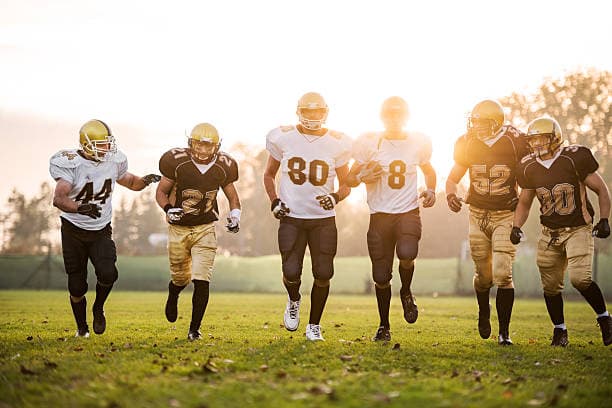
This article delves into the structure of American soccer, examining its tiered league system from Major League Soccer at the top to amateur divisions at the base. It explores the historical evolution, current state, and future prospects of each tier, highlighting key players, clubs, and landmark moments. Aimed at soccer enthusiasts, sports analysts, and prospective players, it offers insights into the sport’s growth, challenges, and opportunities in the U.S., providing a comprehensive view of American soccer’s landscape and its potential trajectory within the global football community.
Introduction to American Soccer
Soccer in the United States has transformed into a prominent sport, with its own unique structure and history. It reflects a dynamic landscape of growth and development, underpinned by a tiered league system that caters to varying levels of professional and semi-professional play.
The Structure of American Soccer
The American soccer hierarchy is distinct, comprised of multiple tiers that serve as the backbone of the sport’s competitive framework. At the pinnacle is Major League Soccer (MLS), the country’s premier professional league, representing the highest level of soccer competition in the United States. Below MLS, the structure descends through the United Soccer League (USL) Championship, USL League One, and the National Independent Soccer Association (NISA), among others, which facilitate the growth of talent and the sport’s expansion across the nation.
| Tier | League | Description | Notable Teams/Players |
| 1 | Major League Soccer (MLS) | The top professional soccer league in the U.S. | LA Galaxy, Atlanta United, Carlos Vela |
| 2 | United Soccer League (USL) Championship | The second tier of professional soccer | Phoenix Rising, Tampa Bay Rowdies |
| 3 | USL League One, NISA | Lower division leagues with semi-professional and professional clubs | Greenville Triumph, Detroit City FC |
The governance of soccer in the U.S. is primarily overseen by the U.S. Soccer Federation (USSF), which sets the standards and regulations for soccer operations, including league structures, club licensing, and player development. The USSF’s role is pivotal in maintaining the sport’s integrity, promoting its growth, and ensuring alignment with international soccer norms.
Comparatively, the American soccer tier system is unique, especially when contrasted with the promotion and relegation systems prevalent in European and South American countries. In most parts of the world, teams can move between divisions based on their performance, fostering a highly competitive environment. However, in the U.S., movement between tiers is not as fluid, with expansion and franchise establishment being more common for ascending in the soccer hierarchy. This structural difference underscores the distinct developmental path and commercial model of American soccer, which, while divergent from global norms, has contributed significantly to the sport’s domestic growth and popularity.
Tier 1: Major League Soccer (MLS)
Major League Soccer (MLS) represents the pinnacle of professional soccer in the United States and Canada, established in 1993 and kicking off its inaugural season in 1996. This was part of the United States’ successful bid to host the 1994 FIFA World Cup, aiming to leverage the event’s popularity to grow soccer domestically. Since its inception, MLS has expanded significantly, now featuring 29 teams across the Eastern and Western Conferences, with a structured season leading to the MLS Cup, the league’s championship game.
Key Players and Landmark Moments
Throughout its history, MLS has been home to several key players and has experienced landmark moments that have helped shape its identity. The league’s early years were marked by the dominance of D.C. United and the emergence of star players like Landon Donovan and DaMarcus Beasley, who contributed significantly to the league’s appeal and competitive level. The introduction of the Designated Player Rule, allowing the signing of international stars such as David Beckham, brought global attention and elevated the league’s profile.
- D.C. United’s early success, winning multiple MLS Cups in the initial seasons.
- The transformative impact of star signings like David Beckham, who joined LA Galaxy in 2007.
- Landmark matches, including the inaugural MLS Cup won by D.C. United, and significant finals like the 2023 MLS Cup where Columbus Crew clinched their third title.
MLS has seen a consistent increase in popularity and quality, underscored by its ability to attract international talents and maintain healthy attendance figures, rivaling other major U.S. sports leagues and international soccer competitions. The league’s structure, emphasizing both the development of domestic talent and the inclusion of international stars, has established MLS as a central pillar of professional soccer in North America.
Tier 2: United Soccer League (USL) Championship
The United Soccer League (USL) Championship stands as the second tier of professional soccer in the United States, positioned below Major League Soccer (MLS). Established in 2011, the USL Championship has grown significantly, both in terms of team numbers and geographical reach, reflecting the increasing depth of soccer in the country.
USL’s Growth and Future Prospects
The USL Championship has experienced notable expansion and development, with plans to introduce new teams in various states, such as Iowa, Rhode Island, and Louisiana. This growth not only enhances the league’s competitive landscape but also strengthens its role in nurturing soccer talent across the nation. The league currently comprises 27 clubs, with additional teams expected to join, highlighting its broad appeal and strategic expansion.
Standout Teams and Players: Over the years, clubs like Phoenix Rising FC, Louisville City FC, and Tampa Bay Rowdies have made significant impacts within the league, showcasing strong performances and contributing to the USL’s rising status. Players like Solomon Asante of Phoenix Rising and Cameron Lancaster of Louisville City have become key figures, demonstrating the league’s ability to attract and develop talent.
The relationship between the USL Championship and MLS has been complex, with ongoing discussions about the potential for promotion and relegation. While direct promotion-relegation has not been established, the leagues have engaged in partnerships, including loan agreements and the integration of MLS reserve teams into the USL structure, fostering a collaborative environment that benefits player development and competition.
Looking ahead, the USL Championship’s expansion plans are ambitious, aiming to bring professional soccer to new markets and enhance its impact on local communities. This expansion is not just about adding teams but also involves developing soccer-specific infrastructure, such as stadiums and training facilities, to support the growing soccer ecosystem. Moreover, the league plays a crucial role in local youth development, providing pathways for young talents to progress from amateur levels to professional stages, thus enriching the soccer landscape in the United States.
Tier 3 and Below: Lower Division Soccer
In the American soccer hierarchy, Tier 3 and below encompass leagues like USL League One, NISA, and various amateur leagues. These lower divisions play a crucial role in developing local talents and engaging communities with the sport. Established in 2019, USL League One serves as a professional platform for clubs across the U.S., promoting soccer’s growth and providing a pathway for players to progress in their careers.
Success Stories from the Lower Tiers
These leagues have been instrumental in the discovery and development of players who later achieved national and international fame. For example, players like Alex Morrell, who made his mark in USL League One, highlight the potential for talent to emerge from these tiers. Clubs such as Union Omaha and Greenville Triumph SC have also gained recognition for their competitive spirit and contributions to American soccer, illustrating the success and influence of lower-tier clubs in the broader soccer landscape.
<H4>Comparative Analysis with International Leagues</H4>
When compared with the second and third divisions in Europe and South America, American lower tiers differ primarily in the lack of a promotion-relegation system. However, the potential for growth and professionalization in U.S. lower-tier soccer is significant, with ongoing expansion and increased investment. The focus on community involvement and player development mirrors the approach seen in international leagues, even as the U.S. continues to carve out its distinct path in the soccer world. The ongoing expansion and success of leagues like USL League One signify a promising future, as they continue to foster talent and expand the sport’s reach across the nation.
Conclusion and Future Outlook
American soccer’s landscape, tiered and multifaceted, pulses with dynamic growth and complexity. The MLS apex showcases an amalgam of domestic and international talent, basking in its ascendancy and global recognition. Below, the USL Championship and League One illustrate the sport’s deepening roots, nurturing players and stoking regional fervor. Yet, challenges loom: the absence of promotion-relegation mechanisms curtails the fluidity seen in international counterparts, and the need for infrastructure investment remains paramount to sustain expansion.
Opportunities abound in the nurturing of local talent, community integration, and the strategic expansion of lower tiers, pointing to a future where soccer’s American iteration resonates more profoundly with its global spirit. Predictively, the sport in the U.S. is on a trajectory toward heightened professionalism and prominence, potentially recalibrating its league structures to align more closely with global standards. As the tiers of American soccer evolve, they weave a narrative of growth, challenge, and potential, reflecting the sport’s burgeoning significance in the American athletic panorama.
